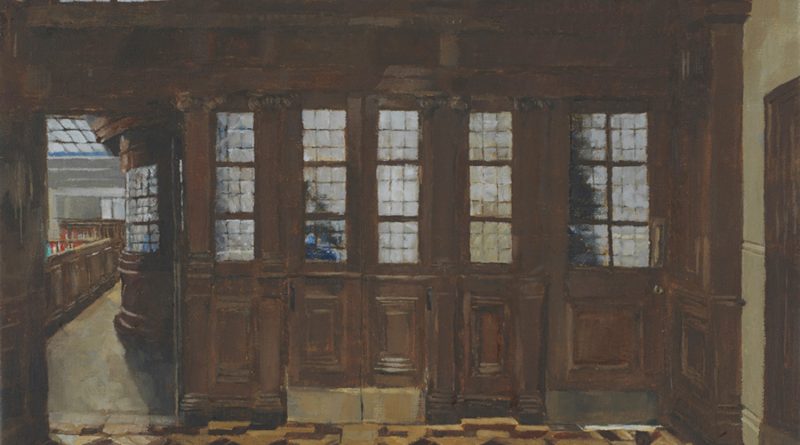Painter Eleanor Crow: Bethnal Green’s accidental archivist
Eleanor Crow’s illustrated world of the East End prove that paintings can develop lives of their own, instigating surprising and often connecting conversations.
You’ve probably swooned over Eleanor Crow’s collection of cheerful watercolours shop fronts before without even realising – their popularity has taken them to bookshelves all over the world.
But Crow’s love for the places and people that make up East London is also reflected in her lesser known yet resplendent oil paintings. It seems she has become Bethnal Green’s very own curator.
Crow’s oil paintings of interiors and still lifes were recently exhibited in Spitalfield Town House. These paintings quietly capture the more intimate corners of the community, but still radiate with light and burst with the bustle of domestic life.
She first moved to East London in 1996 as a student, and has since been documenting the shops and spots that have become embedded in the area’s terroir.
Her book of shop fronts – a project that spanned over the course of a decade – are brimming with bright, charismatic depictions of the likes of Pellicci and G.Kelly: the indelible stalwarts of the Bethnal Green collective consciousness.
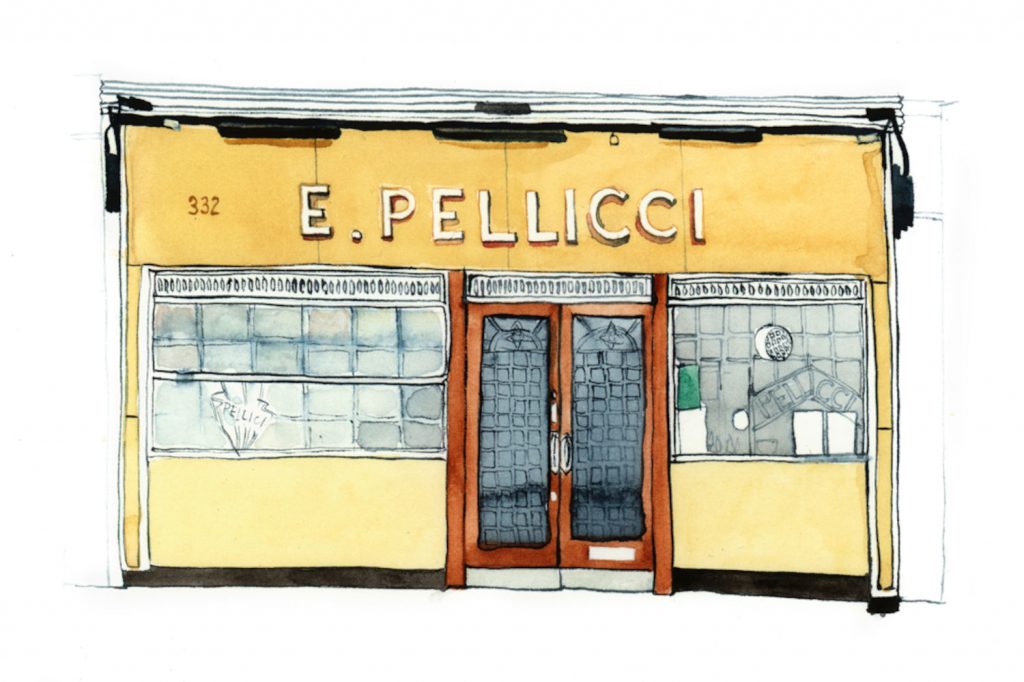
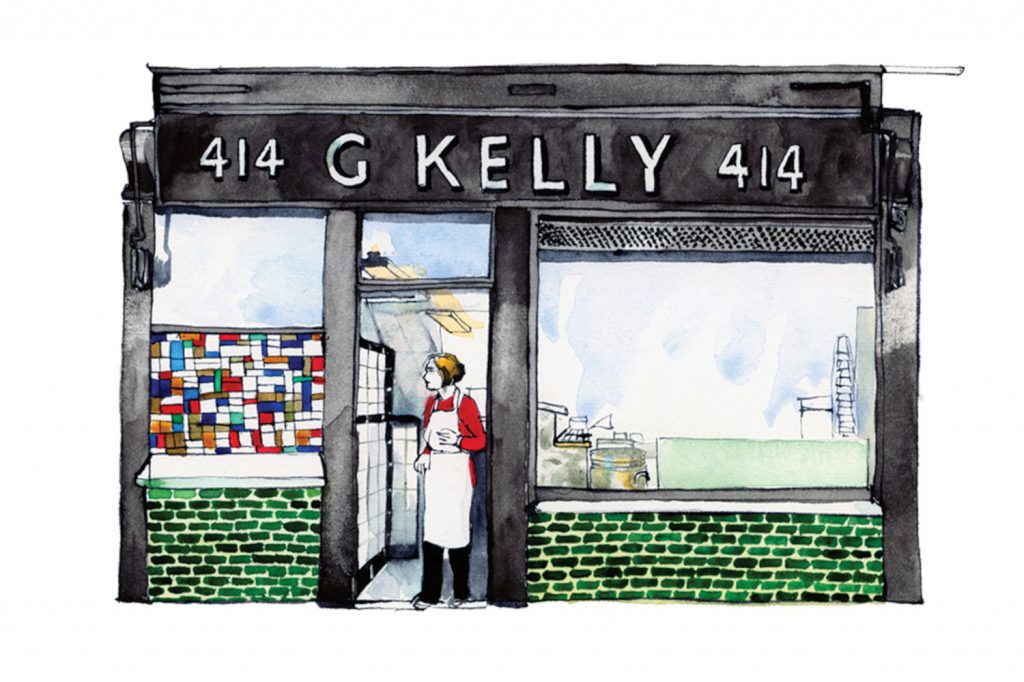
Crow didn’t start the shop front project with a documentarian agenda, but the longevity of the project has meant she has witnessed our highstreets’ ebbs and flows.
With only 70 of the 150 shopfronts she painted still in existence, Crow has become an accidental archivist of the tides of time. ‘I’m so pleased that the likes of Pelicci’s and G Kelly’s are still here – it speaks to how important they are’.
‘I took great care to work with shops that are needed for everyday ordinary things, and that still manage to exist alongside the supermarkets’.
Her work has garnered international intrigue, speaking to a universal calling for high streets to be repopulated with the diversity monolithic chains deprive us of.
Amongst the losses, Crow has noticed the simultaneous growth of the likes of cheese shops and butchers, and a broader mushrooming of food cultures.
She ascribes these trends to consumers’ increasing desire to ‘feel closer to produce’s provenance, to restore trust in what we’re eating in the wake of events like mad cow disease and the horse meat scandal’.
On the flip side, small shops and businesses are ‘vulnerable to these international forces (like the pandemic) and we must take care to foster the right conditions for them to flourish, like affordable rent’.
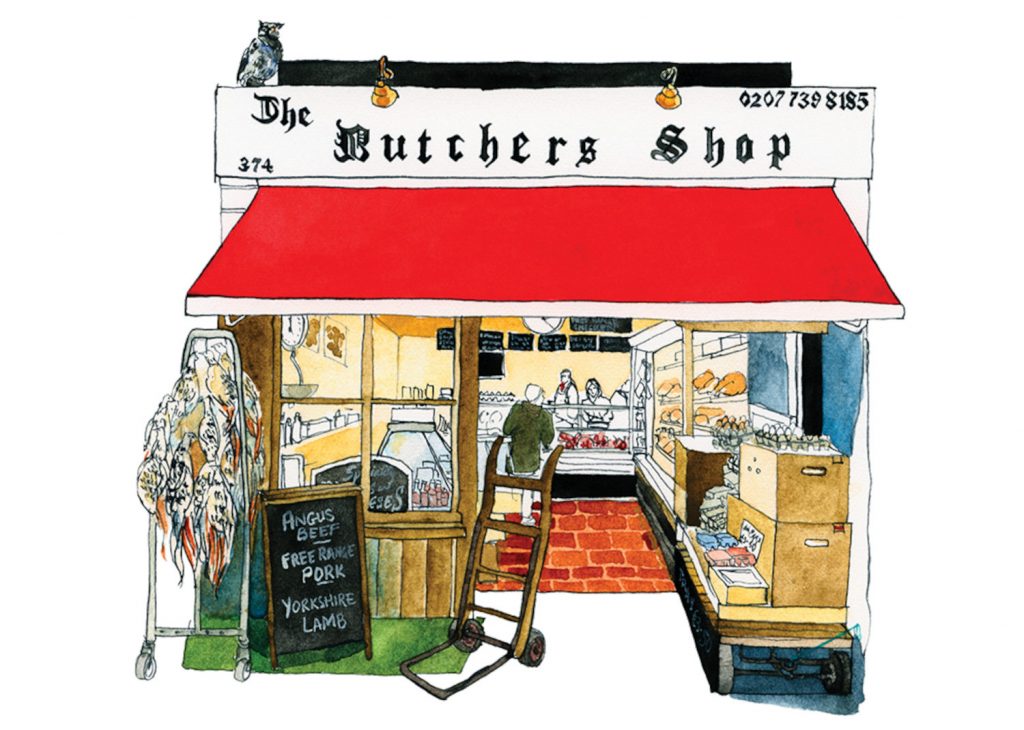
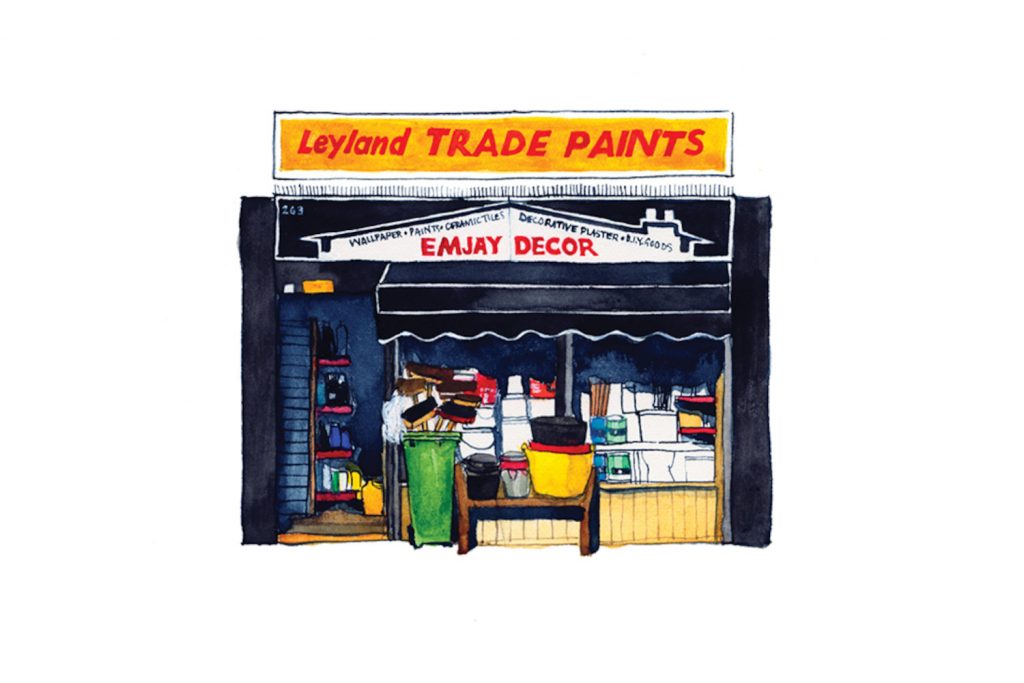
For many artists before and those who will undoubtedly follow, Bethnal Green offers infinite richness.
‘Within a walkable, explorable range there is a huge variety of trade, businesses, people, languages and architecture. It’s been an enterprising place for centuries.’
Crow is both grounded but quietly philosophical about the idea of community – an increasingly trite and vapid term.
‘People are often part of a community without recognizing it, and are working towards a common goal for that place to thrive.’
Can art aid this endeavour? ‘I’m so pleased that my shop fronts have got people talking about why these places matter, even if I didn’t intend it to! So I suppose art does play a surprising role in these conversations, and not always in the way we planned’.
We are certainly thankful for the surprises Crowss brushstrokes have gifted us, and excited for what her eye and love affair with the area will continue to reap.
You can find more of Eleanor’s watercolours here, and gallery work here.
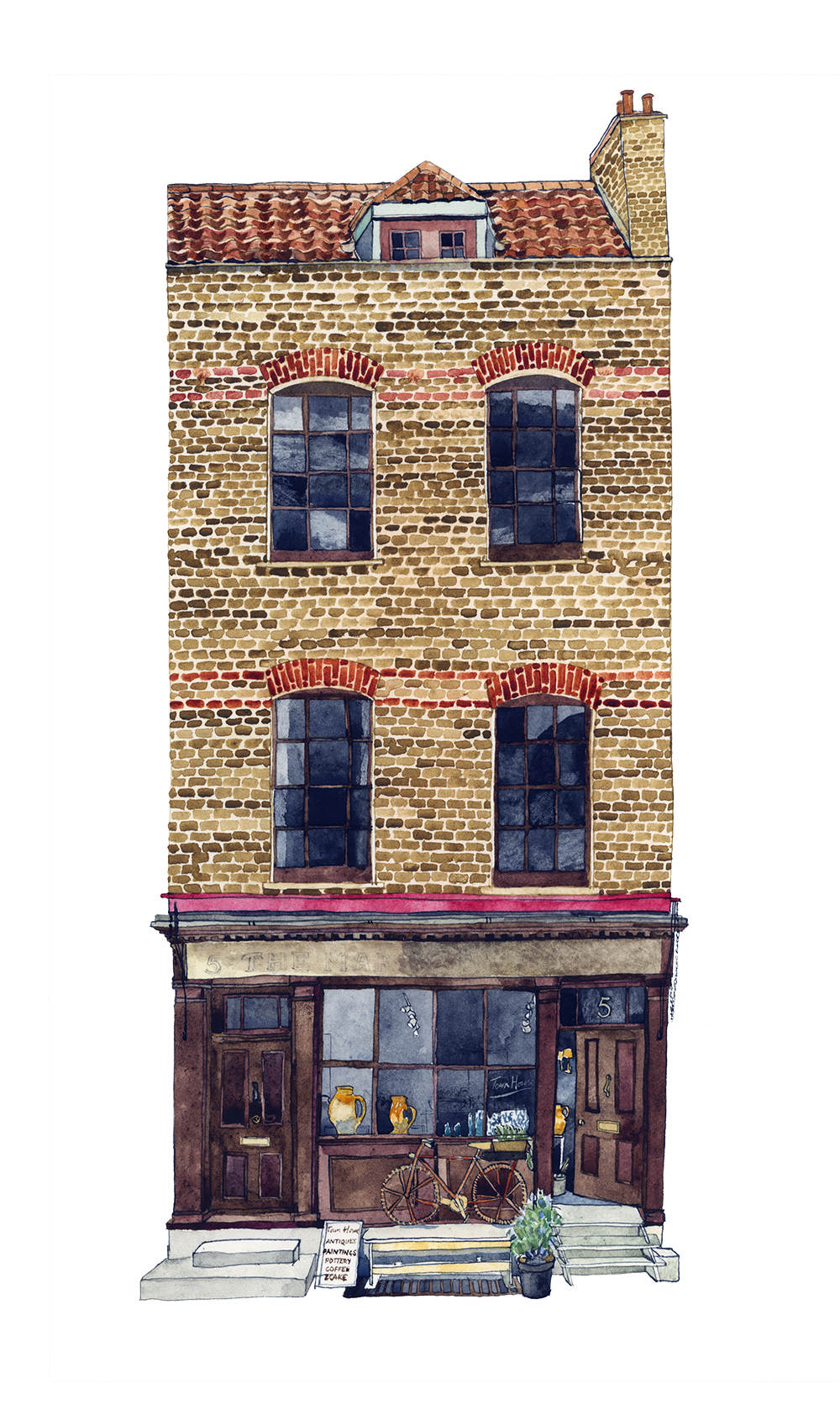
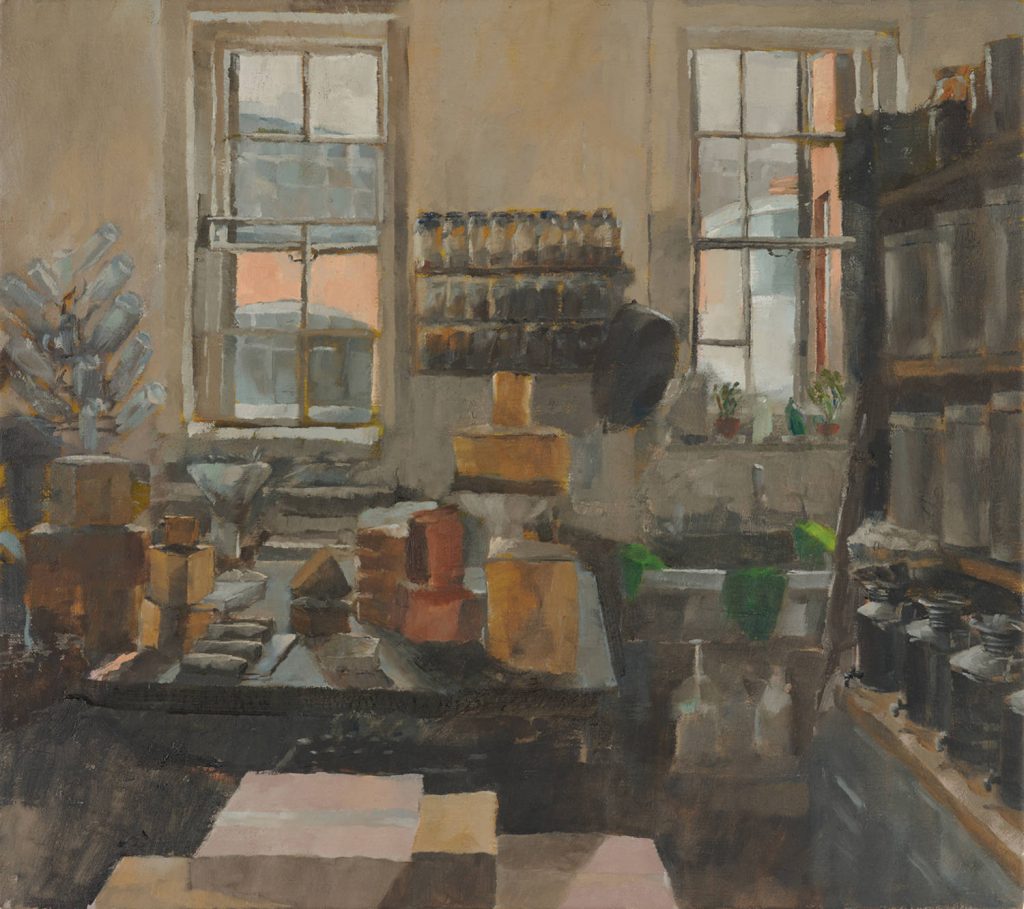

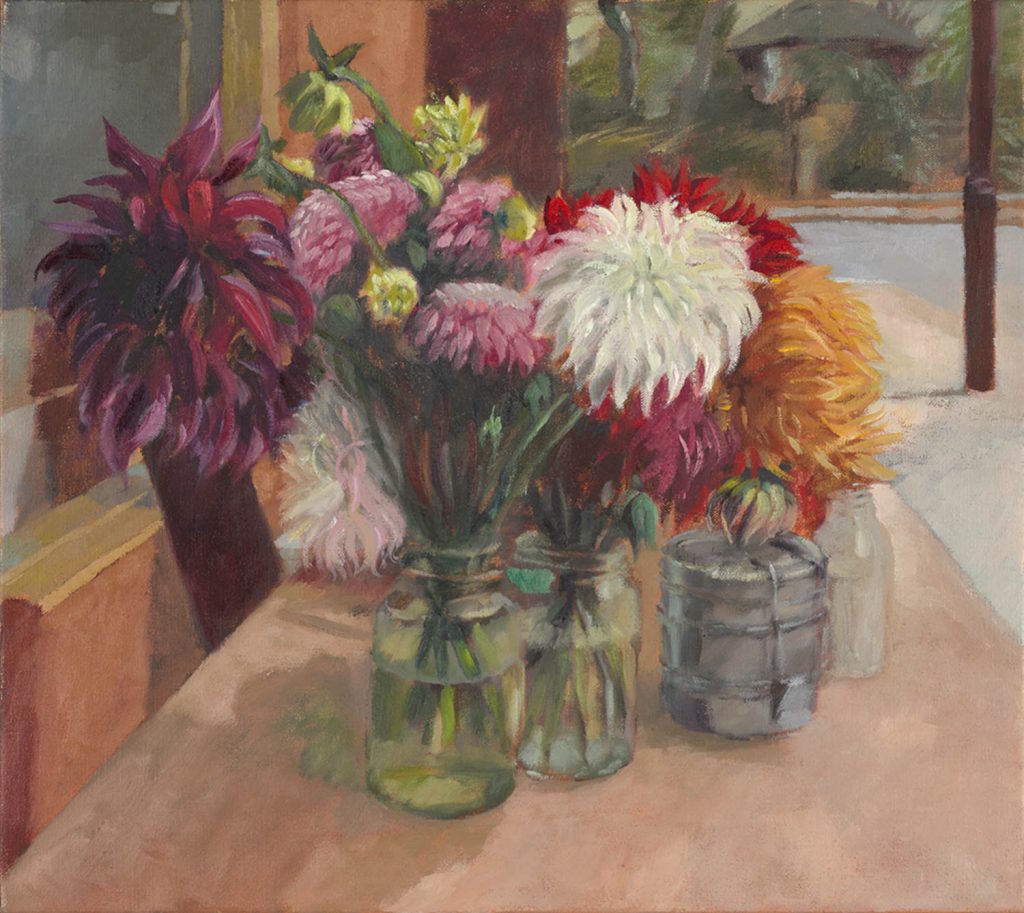
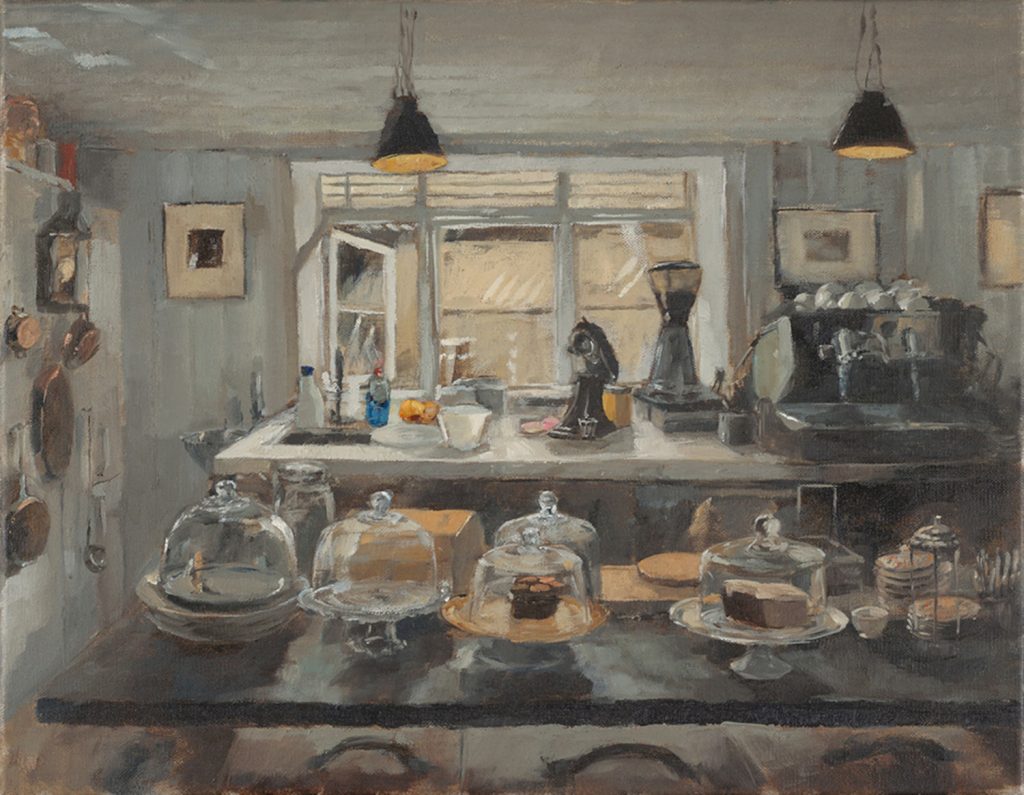
If you enjoyed this article, you may enjoy Leo Andrew’s photoessay of Repton Boxing Club.

